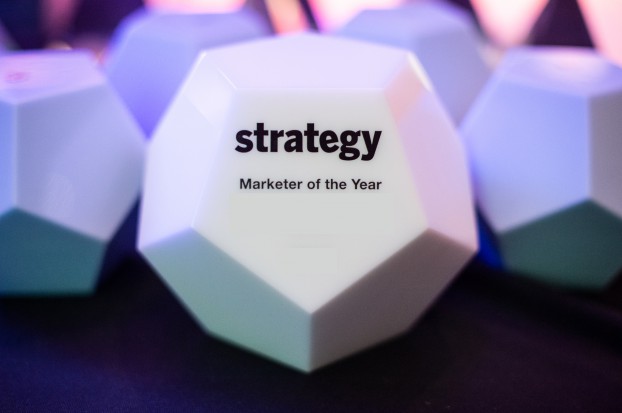Children confined to a bed at Toronto’s Hospital for Sick Children need not lag behind on their education, thanks to a program that allows them to teleconference into the classroom.
The program, unveiled in September, is supported by the Hudson’s Bay Children’s Foundation. Linton Carter, national community relations manager for Hudson’s Bay Company (HBC), says the launch of the foundation coincided with the introduction of the new Wayne Gretzky clothing line in The Bay stores last fall.
For every item of Wayne Gretzky clothing sold, one dollar goes toward the purchase of teleconferencing equipment. So far, Carter says, the foundation has raised $100,000.
Although the foundation was established because hockey star Gretzky wanted to help children, the initiative also meshes well with HBC’s new approach to philanthropy.
While the company has always donated extensively to charities, its approach used to be scattershot, encompassing support for everything from education to international development to the arts. And for the most part, Carter says, these donations were anonymous.
In that, HBC differed little from most major companies in Canada. The traditional model of corporate philanthropy has been low-profile support for whatever charitable or cultural endeavour happens to catch the CEO’s fancy. Those days, however, are long over. Today, companies approach charitable undertakings far more strategically, as part of their overall image-building and reputation-management efforts.
Witness the change at HBC. About three years ago, the company brought in Toronto-based public relations firm Edelman Canada to assist with the move toward a more strategic model. Edelman conducted research among customers and employees, to discover where their interests lay.
For the Bay, whose customer base is predominantly female, women’s health emerged as the top-priority issue. Customers and employees of HBC’s family-friendly Zellers chain, meanwhile, wanted to focus on children.
The result? The Bay became national title sponsor for the Heart & Stroke Walk for Mothers and Daughters, while Zellers lent support to the Kids Help Phone, in addition to continuing its relationship with the Canadian Cystic Fibrosis Foundation.
HBC also decided to move from a top-down model (in which the CEO’s office largely ‘took care’ of philanthropic activities) to a more localized, grassroots approach.
To this end, the company launched Community Counts, a program for all of its stores. Under this program, HBC’s head office passes down money to each individual store manager, who is, in turn, responsible for selecting a local charity to support.
Carter says the stores are encouraged to go beyond simply signing a cheque. Fostering true partnership, through employee participation and the donation of free merchandise, is the goal of the program.
The selection of charities can prove challenging, she adds. In some cases, stores have made the determination by means of a draw. So far, approximately half of HBC’s stores have started their own local charitable efforts.
Restructuring a large company’s philanthropic efforts in this manner was by no means easy. For one thing, the program guidelines stipulate that money cannot be offered to a local United Way charity, since the corporate head office already supports the United Way. The result was that some local charitable organizations were effectively shown the door. ‘It was hard to sever some relationships that we’d had for several years,’ Carter says.
It’s inevitable that such a restructuring will leave some charities out in the cold, says Charles Fremes, president and CEO of Edelman. So the process must be handled sensitively, in order to ensure that charities don’t end up feeling abandoned. ‘You don’t do strategic philanthropy in order to create image problems.’
This is where public relations enters the picture. Fremes says that PR professionals are increasingly in demand to help companies navigate some of these challenges and develop philanthropic programs that match their corporate culture and values.
Mark Sarner, president of Toronto-based social marketing firm Manifest Communications, is quick to agree. Strategic philanthropy, he says, has become the fastest-growing segment of Manifest’s business. Indeed, the firm has recently published a book entitled Social Marketing for Business, designed to help walk corporations through the process.
Why so much interest in strategic philanthropy? Simple, Sarner says. ‘There’s a bottom-line benefit to taking a more strategic approach to giving.’ Research, he points out, has confirmed that customers will support companies that give back to the communities in which they operate.
Sarner says that a company should, to the extent possible, take ownership of whatever cause it supports – essentially branding that issue just as it would a product or service. At the same time, however, the company must take care not to over-emphasize its own role at the expense of promoting the cause itself. ‘You should be talking about the issue and why it matters,’ he says.
Another common mistake that companies make in this area is trying to spread themselves too thin, Sarner says. He recommends concentrating on a relatively small number of charitable organizations, in order to ensure that the company can offer an adequate level of support for each, and build leverageable partnerships.
There’s also little point in entering areas that other companies already ‘own’, argues David Lakoff, manager of corporate communications with National Public Relations in Toronto. ‘If you’re one amongst hundreds [of supporters], you’re going to get lost in the shuffle,’ he says.
That’s not to say a company shouldn’t support such popular causes as education. But if you want to get into a crowded field like that, you’d better find something new to do, he says.
‘You have to be innovative these days to stand out from the crowd,’ Lakoff contends. That’s why he advocates spending money up front, in order to determine how best to direct one’s efforts.
Nina Kaiden Wright, chair of Toronto-based Arts & Communications Counselors, says that by focusing on fewer projects, a company will be better able to make the most of each one. The goal, she says, is to leverage any charitable initiative many times over. ‘That’s where the payback is.’
Consider A&C’s work with Canada Trust. The financial institution’s support of a touring art exhibition entitled ‘The Birds of Canada’ has been leveraged through a number of means, including a coffee-table book and a Web site.
Employee involvement is another factor that can prove key to the success of many corporate philanthropic efforts, says Chris Bunting, president of Toronto-based Shandwick Canada, which has worked with McDonald’s Restaurants of Canada in developing its charitable activities for children.
‘It may be as simple as letting employees know who they support, right down to involving employees in activities and making them a part of it,’ he says.
Public relations professionals can deliver a wide range of support services for companies interested in strategic philanthropy, Bunting adds – everything from reviewing current research and performing audits, to helping match philanthropic efforts to a company’s overall plans and objectives, to communicating the news both internally and externally.
PR practitioners may be called in to work with the non-profit sector as well. Last year, for example, Toronto-based Langdon Starr Ketchum was hired by Girl Guides of Canada, which was then in search of a national sponsor for its long-standing cookie program.
Tracey Bochner, the account supervisor who worked on the initiative, says that Langdon Starr’s first task was to evaluate the potential worth of the sponsorship, through comparison with other charitable programs, ranging from the Toronto AIDS Walk to the Children’s Aid Society’s Teddy Bear Affair. ‘We looked at everything,’ Bochner says.
The PR firm then had to develop a pitch, select a target list of companies and create a presentation. Although prospective sponsors showed immediate interest in the opportunity to slap their logo on some seven million boxes of Girl Guide cookies, it wasn’t until the story hit the press that events moved along fast enough to ensure a sponsor for next year’s cookie drive.
In the end, CIBC landed the two-year contract, and will be using the cookie boxes and carrying crates to promote its Smart Start youth initiatives program.
Youth-oriented programs tend to be quite a popular choice for corporate support, notes Heather Reid, chairman of Toronto-based Canada Porter Novelli.
Her firm, for example, recently put together a public awareness initiative called Get Set for Life, which emphasizes the importance of the first five years of a child’s life. A series of animated television spots promote the virtues of patience and love in the child-rearing process.
The program was developed on behalf of the Invest in Kids Foundation and the CBC. Support came from Bell Canada, Unilever (the Sunlight and Lipton divisions) and Health Canada.
Canada Porter Novelli, Reid notes, plans to launch a division that will specialize in social marketing within the next six months.
There’s no one-size-fits-all approach for companies looking to pursue strategic philanthropy, says Allan Reynolds, executive vice-president with Shandwick Canada. Every organization must look at its own reputation management program, and determine whether supporting a charitable cause will further its goals.
At the same time, Reynolds says, companies must take care to manage the high expectations of the public.
Last year, he notes, the Imagine Institute released statistics showing that the general public considers corporate Canada capable of meeting as much as 30% of the demand for charitable dollars. Currently, it accounts for just 2%.
Also in this report:
– Keeping employees in the loop: In these days of mergers and acquisitions, internal communications means much more than a staff newsletter that’s heavy on bowling scores and light on facts p.B13
– PR plan key to winning in court of public opinion p.B16
– Anatomy of a press release p.B19























